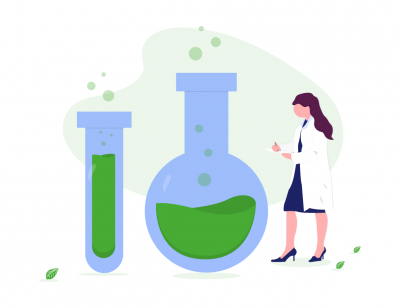
Design and testing
We take the time necessary to gain an in-depth understanding of the problem, its context and the needs and motivations of our clients. We hold expert panels, creative, strategy and implementation sessions for both clients and product and service users. We develop prototypes and conduct tests to transform good ideas into brilliant solutions. We not only meet our clients’ expectations but co-create solutions with them that are accessible, intuitive, ergonomic, sustainable and useful.
The ability of an organisation to learn and adapt to new conditions is a key factor in the innovation of its services. Therefore, when analysing organisations we primarily assess two key aspects: how the organisation learns and what its learning potential is. In our diagnosis, we analyse factors such as: types of impulses, self-reflection, knowledge and adaptation, as well as organisational factors, i.e. staff, leadership, a sense of security, resources, procedures, habits and the relationship with the surroundings. This helps us to find out why the organisation is not making full use of its learning potential and shows us how it can be effectively harnessed. Every time, we adapt the assessment model to the specific nature of the organisation we are studying. During the analysis, we learn the perspective of both the organisation’s management and the employees at various positions. We collect data through employee and customer surveys, workshops, interviews, observations and in-depth analysis of data from the organisation’s operations.
In order to find a solution to a problem, you often need to react quickly. That is why we use the design sprint approach. During intense several-day workshops, we go through the whole cycle of creating a solution together with our clients and end-users – beginning with understanding the problem, exploring it, creating ideas and then prototyping and quickly validating them on an ongoing basis. This is a fast and effective way of finding answers to our client’s challenges.
REACT is a behavioural service-design methodology. The name is an acronym for the subsequent stages of the process: Redefine – Explore – Analyze – Create – Test. REACT focuses on the specific behaviour of service users. It lets us organise services in such a way that as many people as possible start behaving in a desired way, e.g. spending more time actively. With REACT we are therefore working to change people’s behaviour. In the redefinition phase, we establish what behaviours we want. In the exploration and analysis phase, we identify the barriers that prevent users from acting as desired. In the creation phase, we look for ways to eliminate these barriers and then for impulses that activate a given behaviour. In the testing phase, we check how the users of the designed solutions actually behave. To design a behaviour – we design the individual elements of the environment in which people make their decisions. We want this behaviour to be intuitive, simple, emotionally engaging and positive. Practitioners of the REACT methodology become deliberate architects of behaviour. This is because they learn how to create solutions that are cheaper, simpler and adapted to real customer behaviours.
Many organisations communicate with their customers through the use of letters and legal documents. To improve this communication, we examine how difficult they are for the recipients to understand. Collaborating with experts and the recipients of such correspondence, we identify the most difficult, confusing, unintelligible and discouraging content. In the next stage, we redesign the letters and documents so that they are customer-friendly, understandable and have a positive impact on the organisation’s image.
Testing helps to avoid the implementation of solutions that are incomprehensible, underdeveloped or inadequate to customers’ needs. That is why we conduct usability tests of our solutions (during other stages) or solutions developed by our customers. The main benefit of well-conducted tests is saving resources: time, money and people’ energy. Thanks to testing we avoid mistakes, wastage and discouragement, which is usually the case when untested concepts are implemented. During testing, we check how potential users react to a solution or prototype of a product, service or process. This is how we find out whether what we have developed is useful to our target audience and whether they would like to use it. We collect feedback from them and improve the solution.
We provide support to clients who are testing the usability of interactive devices and software. We advise on how to increase their efficiency and simplify their usage. To achieve this goal, we conduct usability audits, closely observe the users, learn about their true preferences and try to understand the problems that they encounter when using specific products.



